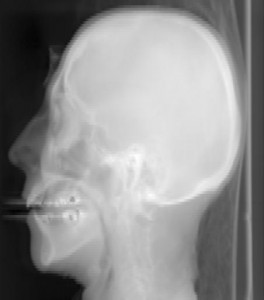I recall burning three or four weeks of a sabbatical getting Saccade.com on the air with Wordpress. So much tweaking…
Volume Rendering: Going boldly where all have gone before…
The math for all this is described quite admirably by Tom Malzbender’s paper Fourier Volume Rendering.
Addendum: Here is the raw data slices:
httpv://www.youtube.com/watch?v=UrwnuEtNUKc
Addendum2: Here is a link to some more interesting volume datasets.
Addendum3: Here’s my attempt at rotation. It doesn’t really work right yet. I think I understand why.

Comment from stefanbanev
Time 8/15/2009 at 2:25 pm
GPU fits perfectly well for this technique; you may get order of magnitude speedup comparatively with i7 920. Shading is non-trivial for FVR but possible. Arbitrary cut planes, arbitrary classification (especially multiple), fly-through etc…, such tool set essential to build even rudimentary VR WS is unknown for FVR; I have no doubts that this is possible but still nobody did it; you may be the first, good luck….
Regards,
Stefan